Science is an inextricable and integral part of the Pao School curriculum. As an essential
part of student’s development, it improves their ability to understand the world through
research, discussion, experiments and projects. Thanks to the strong grounding in
scientific principles provided by an education at Pao School, students are able to
put theory into practice with innovative science projects. Recently, two such projects
developed by students Jason and Tuding – a spherical robot and lunar lander –
performed impressively at the 2021 Shanghai Municipal Science Competition.
From Exploration Unit to lunar lander
Tuding (Y10) won first prize for individuals in the aeronautical engineering section of the 17th Shanghai Future Engineer Competition. He chose the aeronautical engineering project because he sees this technology as paramount for space exploration, as it may allow us to transport human-created technologies deep into space and to other planets. And, excitingly, expertise in this field may help human beings to explore beyond the earth in the future.
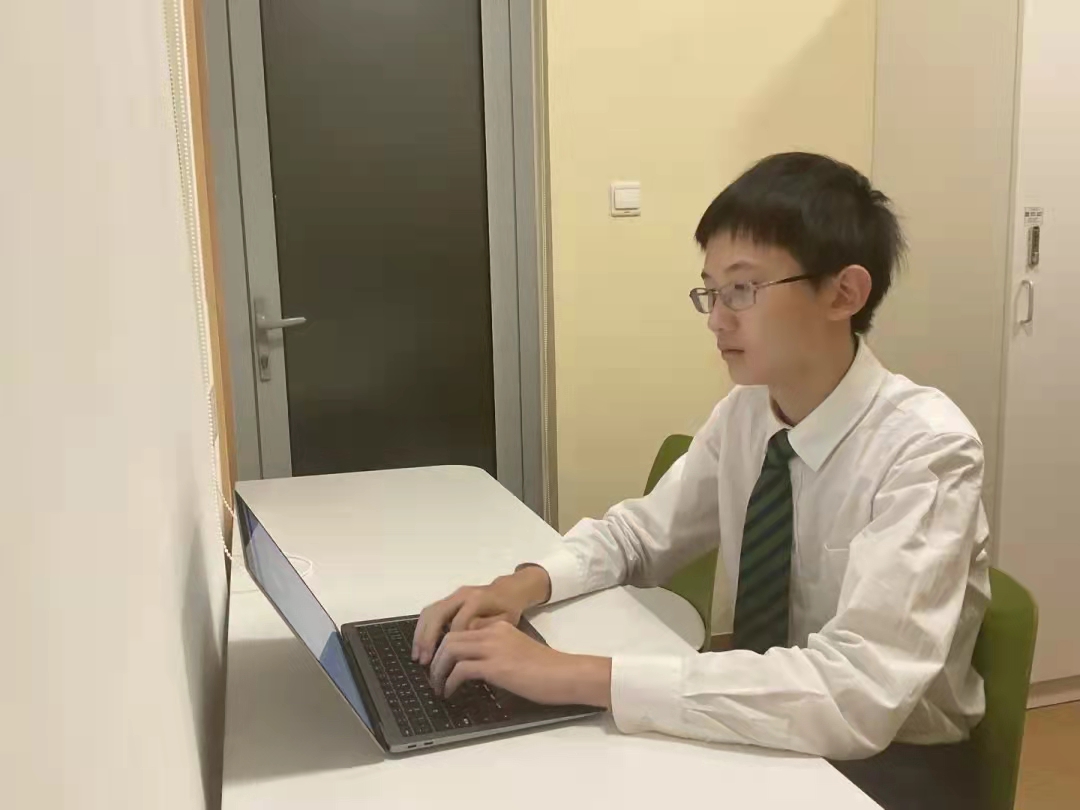
Tuding joined Pao School in Year 1 and was part of Hongqiao’s first cohort of Year 6s. Recalling his primary years, Tuding fondly remembers ICT and Exploration Units (EU) classes. The latter is a student-centered interdisciplinary course designed to stimulate students' interest in the humanities and sciences. Tuding believes that he learned very practical knowledge from these two subjects: The 3D modelling he learned in the ICT allows him to reproduce the same model in the computer as in real life, which he finds remarkable. In EU, he was most impressed by a parachute making project used to explain the concept of air resistance. For this, the students needed to make a parachute that could carry an egg safely from the fifth floor of the school to the first. Unforgettably, the only parachute that succeeded in this task was one made by Tuding and his father.
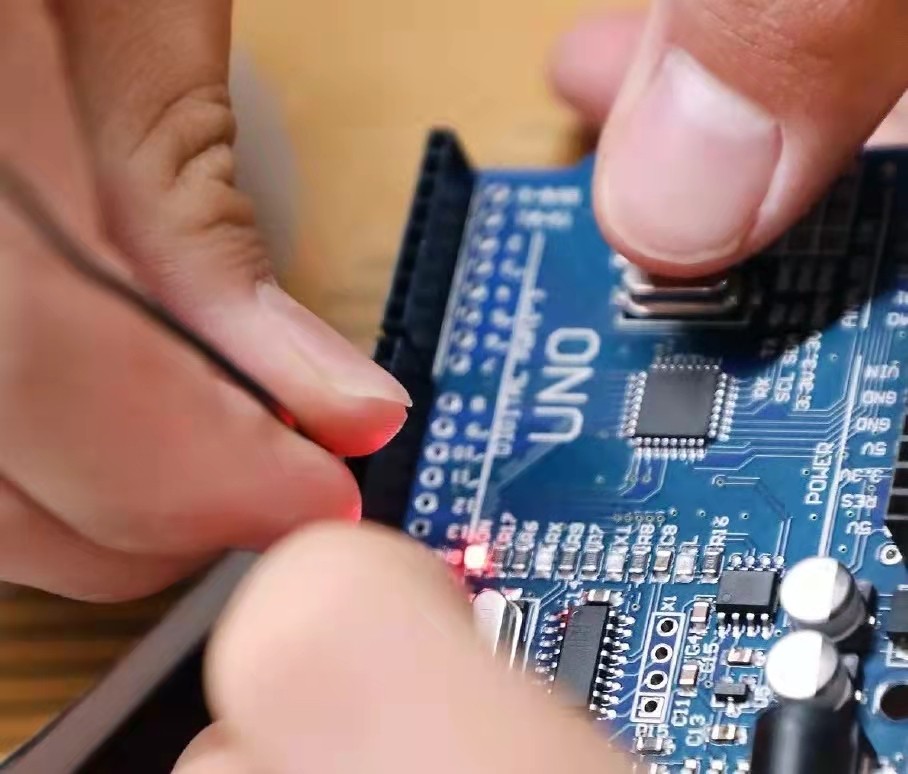
Tuding says that when he arrived at the Middle School, he found that the school’s curriculum became more detailed and in-depth. In Middle School, his favourite subject has been physics because he has found that it has many real-life applications and can express real-world phenomena through simple calculations.
Tuding has a number of fond memories of the physics projects he has taken during his time at the school. When the physics teacher explained the relationship between air pressure and the condensation point of liquids, he used plastic bottles, pumps and alcohol to create a cloud in a bottle. On another occasion, the teacher asked the students to use computer software to create a flight simulator. Although the rockets and planes Tuding built were ultimately successful in the end, he could not shake the feeling that there was even better way – but he had not yet discovered it.
Tuding’s prize-winning lunar lander uses the same software he developed for the flight simulator he worked on all those years ago in Year 6. It took him two weeks to complete the lunar lander for the competition, starting from the concept design. At the beginning of the process, he referred to many design schemes, and was inspired by the landing method of NASA’s Curiosity rover.
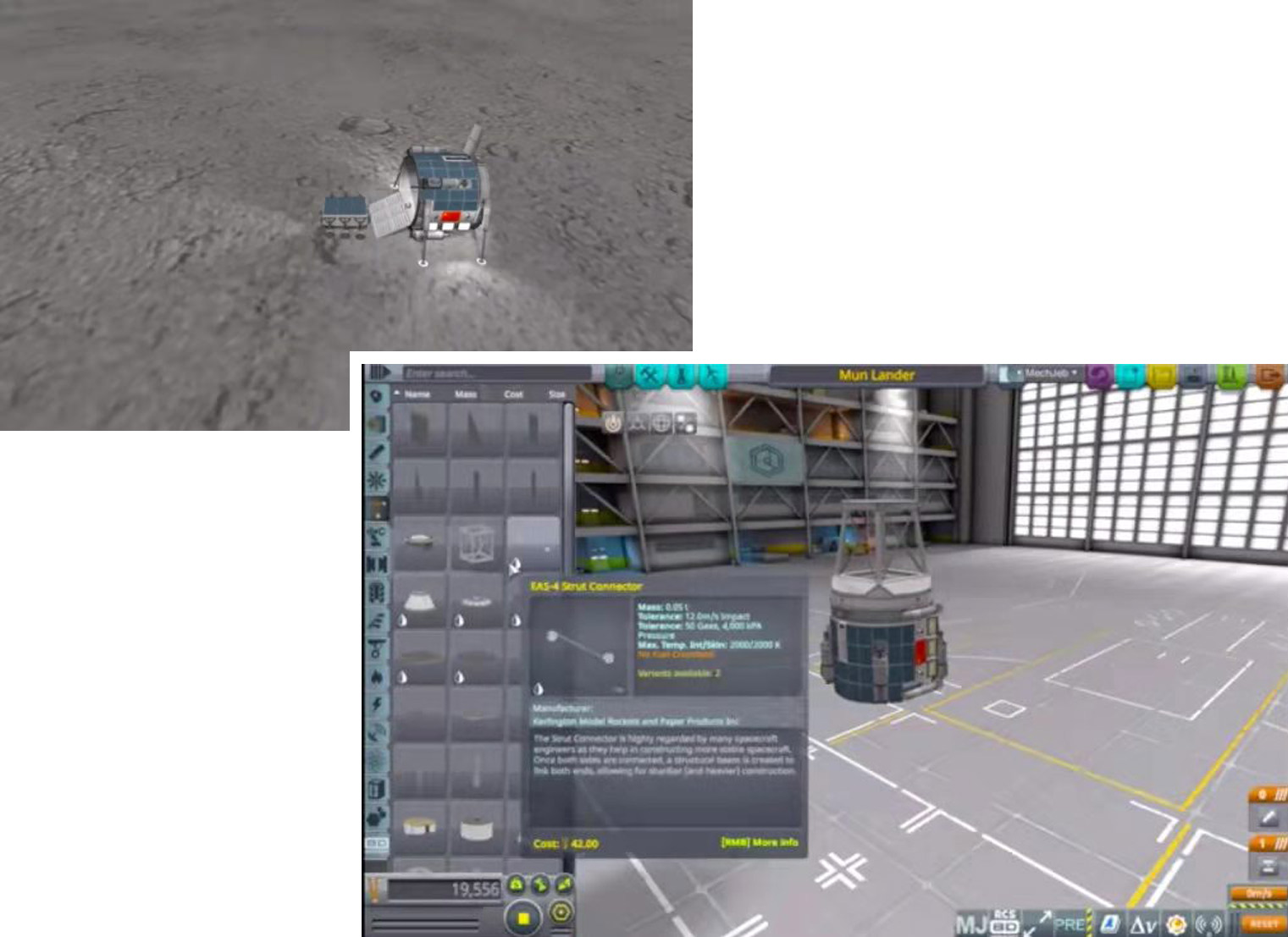
The lunar module designed by Tuding uses solid fuel APCP (Amine Perchlorate Combined Propeller) as the propellant for the launch vehicle. Tuding selected a solid-propellant rocket because most liquid fuels require rockets to have particularly thin cooling tubes, which makes the rockets expensive. However, Tuding’s choice of solid-fuel engines only require nozzles, which are cheaper and use less elaborate materials. Despite these benefits, the solid-propellant rocket is challenging in its own right; it has high requirements for computer control systems and programming, and it also needs to be equipped with very sensitive sensors.
According to Tuding, he encountered two main difficulties over the course of this project. One involves the time to ignite the solid thruster during the descent, and the second is the time required for separation of the propulsion module from the main body of the lander. In order to solve these problems, he installed eight solid thrusters on the launch vehicle. He also wrote a set of programs to calculate the best time for the propeller to ignite and also disengage when the rocket travel speed reached zero. After the lunar lander safely reaches the surface of the moon, it will turn 90 degrees and become the base station of the lunar vehicle installed in the cabin.
An except of the video submitted by Tuding for the competition
In addition to the Future Engineer Competition, Tuding has also participated in many international competitions. He was the gold medalist at the British Physics Olympiad (BPhO) and also won the first prize of the Chinese division team in the Real World Challenge (RWDC).
Tuding shared that for this award, he would like to thank Mr. Wang Zhong from the High School Science Department for his suggestions and questions. For his efforts, Wang Zhong was also recognised at the competition as a recipient of the outstanding instructor award. Reflecting on this, Tuding is grateful for his support and guidance, saying, “Mr. Wang Zhong asked me some useful questions to help me reflect and eventually improve.”
Wang Zhong explains that Pao School aims to “personalize” a student’s education by
teaching in accordance with their aptitude, so that they can find their strengths and
continue to challenge themselves. He remarks that, as a student, Tuding has a very high
concentration and a strong spirit of research, the strengths teachers want to see most.
Learning beyond classrooms
Jason (Y8) designed a self-balancing spherical robot, which went on to win first prize in scientific and technological innovation in the 36th Shanghai Youth Science and Technology Innovation Competition.
Jason's research surrounded a self-balancing spherical robot based on the smart and flexible spherical robot BB8 in Star Wars. Jason spent nearly a year on the project, from its inception to his winning first prize. It was a multi-step process in which he researched relevant scientific literature, learned programming, bought materials to construct the robot, wrote code, built models, conducted field tests, made videos, wrote essays and finally, defended the project in a final presentation. Jason shared, "I couldn’t have done it without teachers’ generous support and guidance.”
Like Tuding, Jason has come to greatly enjoy studying at Pao School. Not only is Pao School a place where he can learn in the classroom, it has also provided a wide variety of opportunities for him to explore his interests and develop hobbies, especially in co-curricular classes – including Wing Chun, chess, Formula 1 models, military models and sudoku.
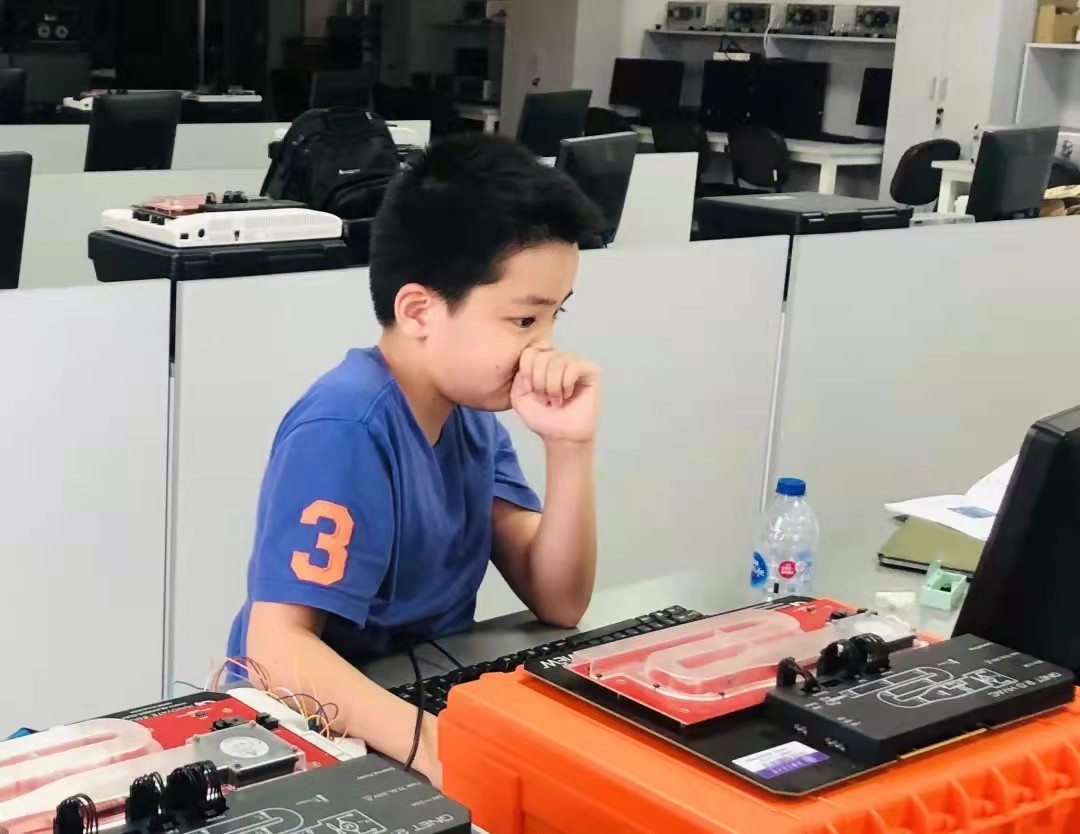
Jason's mother feels that Pao School expands students' horizons beyond classroom learning, with its holistic approach to education, and focus on art and sports as well as academics. Teachers endeavour to create more learning opportunities for children, allowing them the freedom to discover their abilities and cultivate hobbies while boosting their confidence. If a student is having trouble with academics, they will be supported by the school. But, what has been most surprising for Jason’s mother is the school’s enormous investment in co-curriculars.
Jason feels that while primary school is about cultivating academic interest, the academic intensity is higher in the middle school. For example, science teachers began to teach students how to write academic papers in Year 7. From the basic structure and elements of the paper, to analysis and appreciation of excellent works, the teacher taught the students the process in detail. Last year, Ms. Weng of the Science Department led students to write a paper on sickle-type anaemia. Then, later in the year, students made an amphibious bicycle model under her guidance, and wrote a scientific thesis incorporating experimental data and other elements of the research process.
When he first began writing academic papers, Jason struggled, but thanks to his teacher’s patience and guidance he gradually improved. Because he is now accomplished in this area, he was able to clearly present his project and research results at the Science Innovation Competition. At the competition, Jason expressed his gratitude to his teachers Ms. Weng and Ms. Tina for their daily teachings and advice, which were invaluable for his success in the project.
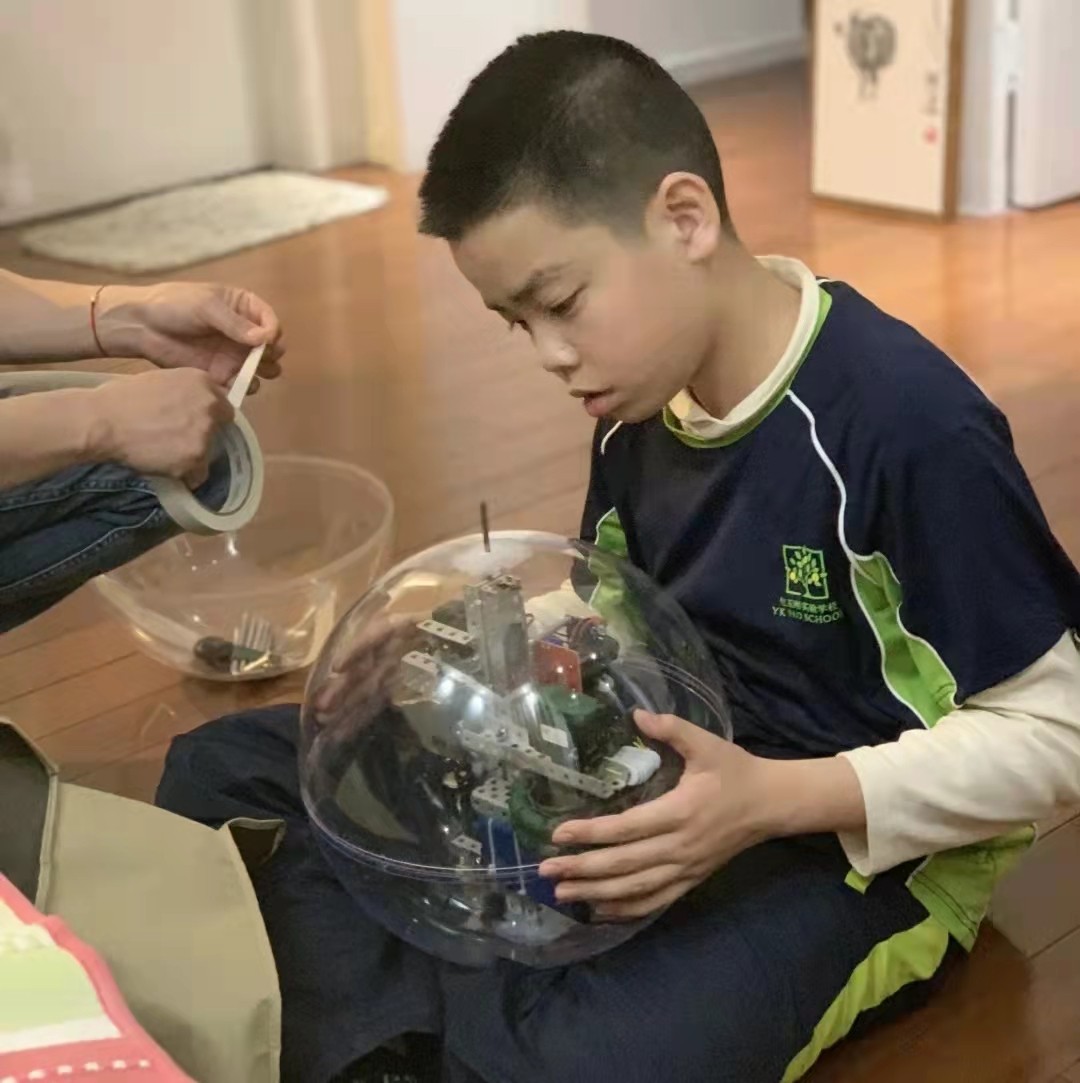
In February 2020, Jason officially started the spherical robot project. After studying existing all-terrain robots on the market, he found that spherical robots have the advantage of adapting to driving in wet and rugged environments. However, most of them have problems such as complex driving methods, inflexible steering, and inability to maintain balance. In order to solve these problems, Jason adopted a self-balancing driving method to control the movement of the robot in the design. He also installed an independent motor to control the left and right movement of the crawler, adjusting the robot’s centre of gravity and controlling its turning. After completing the overall design, he tested the robot’s driving capabilities in different environments and scenarios.
In addition, since an understanding of programming languages is necessary to design robots, Jason used his extracurricular time to learn Python and Arduino as well as computer simulation systems. This was possible because he already had a foundation in Scratch programming that he learned in Pao School’s Information Technology (ICT) classroom.
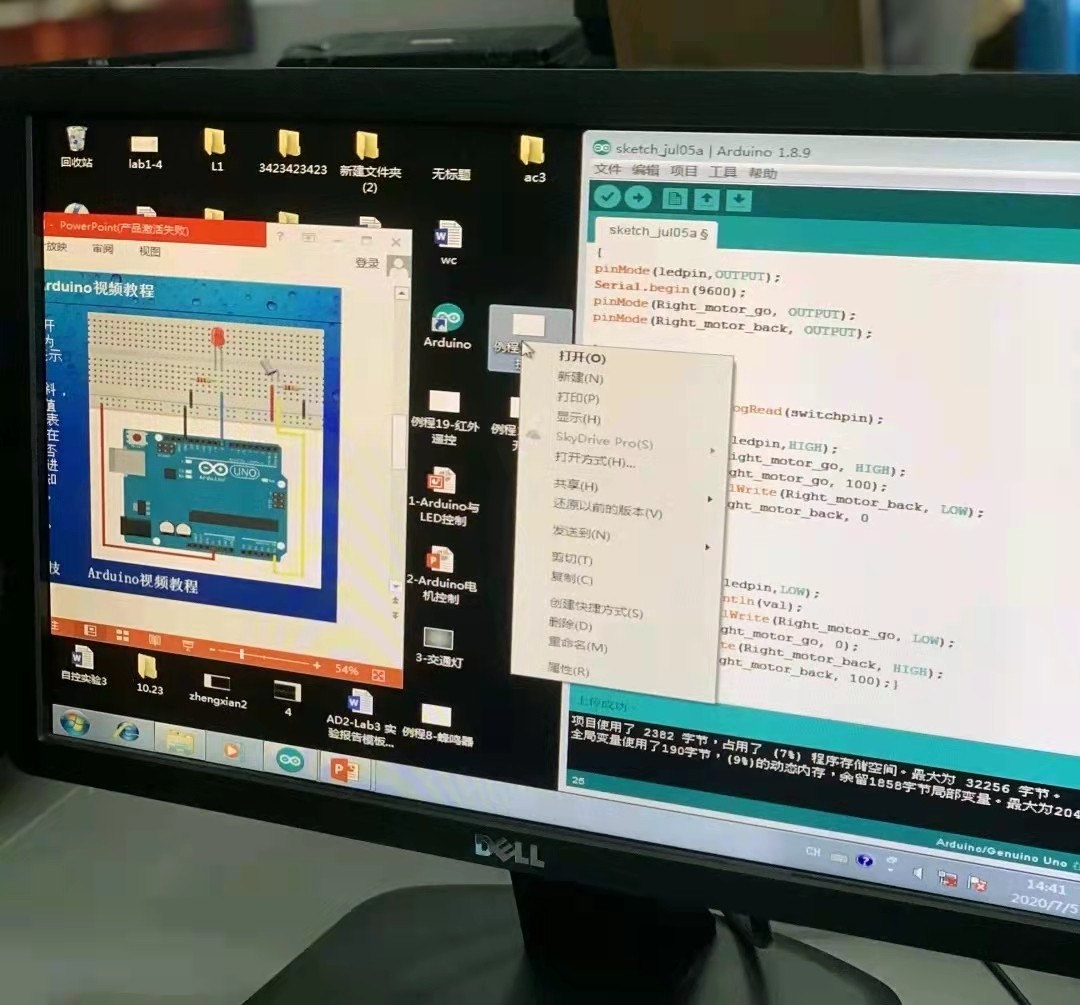
In the defense of his thesis, Jason had to stand before several professors from top universities in China and deliver a 10-minute online speech, a physical demonstration and participate in a Q&A session. Jason said that although he was a little anxious at the beginning of the speech, he did not fear defending his thesis. This is because he was already well versed in public speaking by that point, thanks to the many lectures and project demonstrations he had done at school. Before the competition, he practiced his speech repeatedly in front of Ms. Tina and the Ms. Chris, the Director of Academic Affairs at Hongqiao, to ensure he was well prepared.
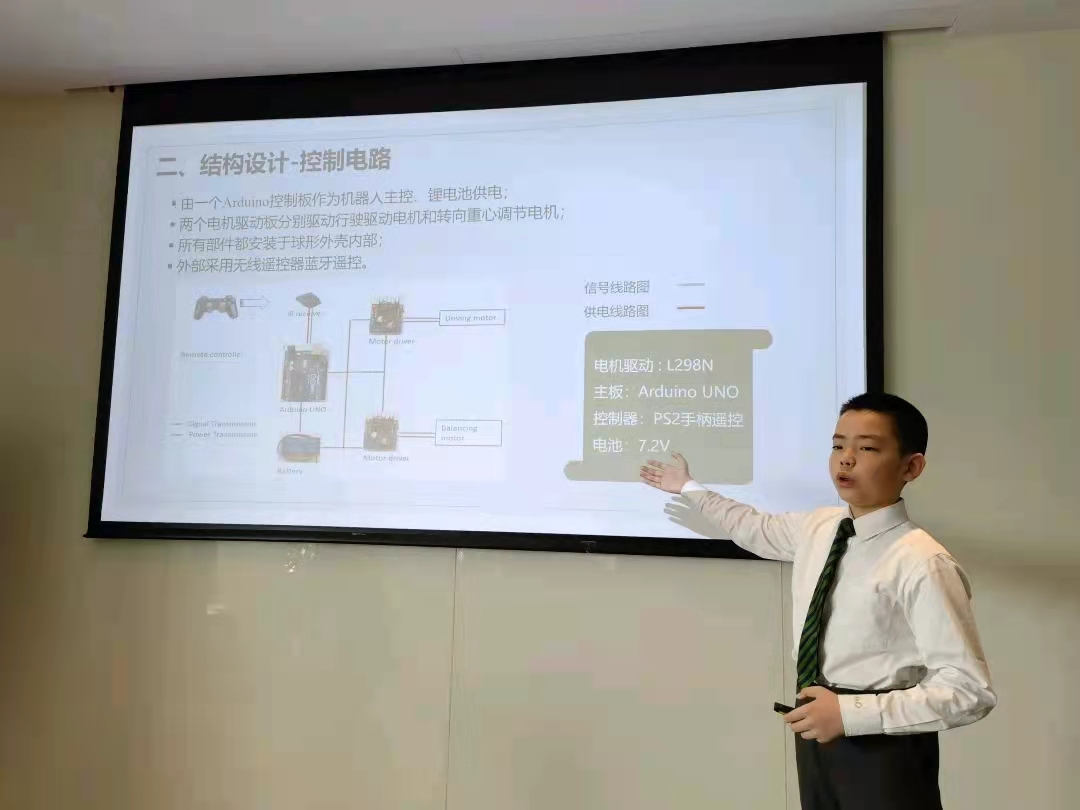
Regarding her award-winning son, Jason’s mother said, "As parents, we care most about how Jason
grew this process – he saw his project through to the end and strengthened his self-confidence. We are
also appreciative of the tremendous support Jason got from the teachers at Pao School, including Ms. Weng,
Ms. Tina and Ms. Chris. Pao School is a tight-knit community. Some people choose to leave Pao School and
begin their studies abroad early, but not us. For us, it most important for our child to be in an environment
like Pao School, where traditional Chinese culture is an integral part of daily teaching and learning."
*Thanks to Benjamin Zhao, Tuding's mentor, for his contribution to this article.